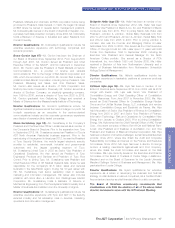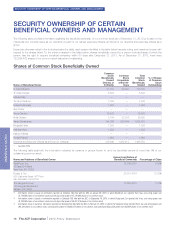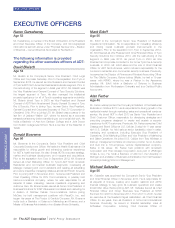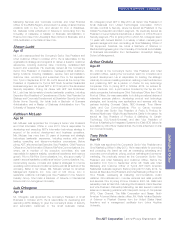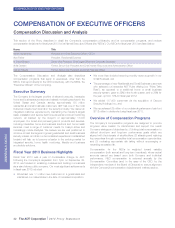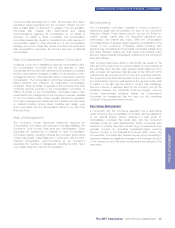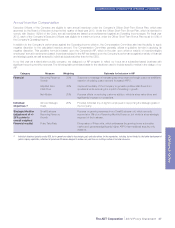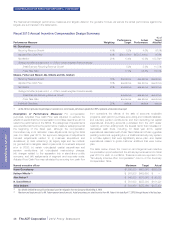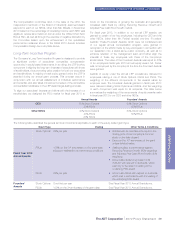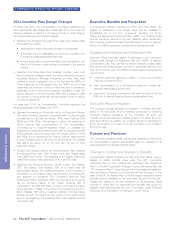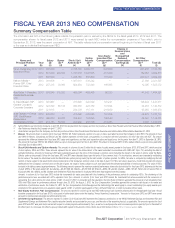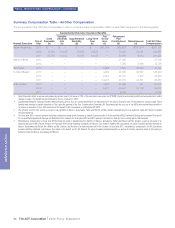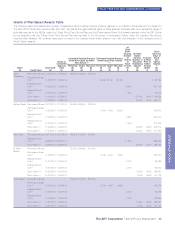ADT 2013 Annual Report Download - page 39
Download and view the complete annual report
Please find page 39 of the 2013 ADT annual report below. You can navigate through the pages in the report by either clicking on the pages listed below, or by using the keyword search tool below to find specific information within the annual report.
COMPENSATION OF EXECUTIVE OFFICERS—CONTINUED
Annual Incentive Compensation
Executive Officers of the Company are eligible to earn annual incentives under the Company’s Officer Short-Term Bonus Plan, which was
approved by the Board of Directors during the first quarter of fiscal year 2013. Under the Officer Short-Term Bonus Plan, which is intended to
comply with Section 162(m) of the Code, annual incentives are based upon achievement against an Operating Income target. For fiscal year
2013, each of the Company’s Executive Officers was eligible for a maximum bonus under the Officer Short-Term Bonus Plan equal to 0.5% of
the Company’s Operating Income.
In addition to the Company’s performance against the Operating Income criterion, the Compensation Committee also has the ability to apply
negative discretion to the calculated incentive amount. The Compensation Committee generally utilizes a guideline formula in applying its
negative discretion. This guideline formula is based upon the Company’s AIP, which is the plan upon which a majority of incentive-eligible
employees’ annual incentives are based. Incentives subject to the AIP are based upon the Company’s performance against a variety of financial
and strategic goals, as well as specific individual objectives (other than for the CEO).
In our first year as a stand-alone public company, we designed our AIP program to reflect our focus as a subscriber-based business with
significant recurring monthly revenues. The following table provides a basis for the decisions used to include specific metrics in the design of our
AIP:
Category Measure Weighting Rationale for Inclusion in AIP
Financial Recurring Revenue
Growth
30% Supports our strategy of increasing recurring revenue through customer additions,
retention of existing customers and increased ARPU.
Adjusted Free
Cash Flow
30% Captures the ability of the Company to generate positive cash flows from
operations while excluding the impact of investing in growth.
Net Attrition 20% Focuses efforts on reducing customer attrition, which is a key value driver and
significantly impacts our operations.
Individual
Objectives (1)
Various Strategic
Goals
20% Provides individual line-of-sight to employees in supporting the strategic goals of
the Company.
Strategic Modifier
(adjustment of +/-
20% points to
overall weighted
Financial results)
Small Business
Recurring Revenue
Growth
Pulse Take Rate
Focuses on growing revenues in our Small Business unit, which currently
accounts for 8% of our Recurring Monthly Revenue, but which is a key strategic
segment of the business.
Drives sales of Pulse units, which addresses the growing home automation
market and generates significantly higher ARPU than traditional security-only
systems.
(1) Individual objectives typically vary by NEO, but in general are related to key strategic goals and value drivers for the organization, including, but not limited to, the further development of
public company capabilities, refinement of operational efficiencies designed to reduce costs, and focus on instilling a culture of customer obsession.
The ADT Corporation 2014 Proxy Statement 27
PROXY STATEMENT


